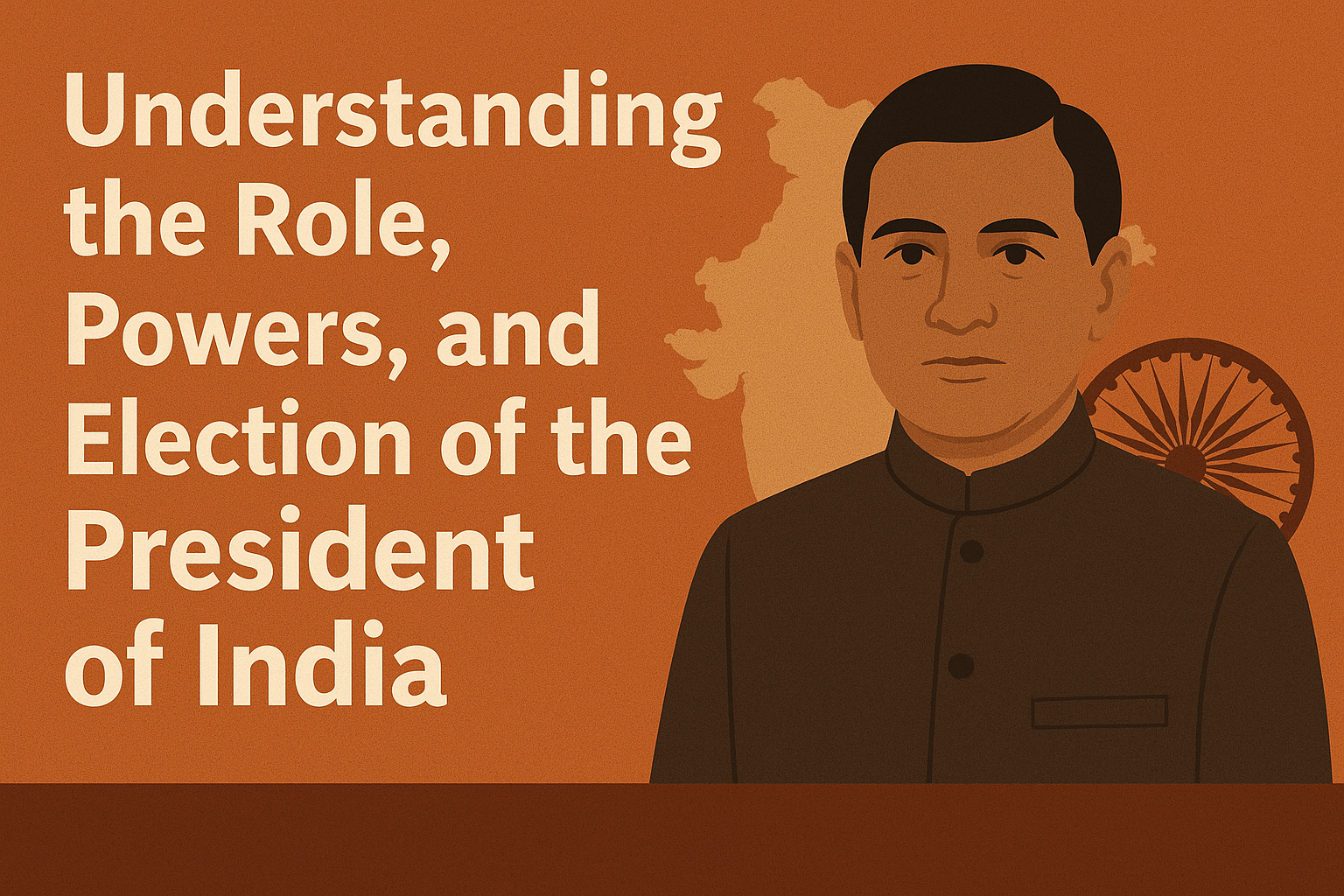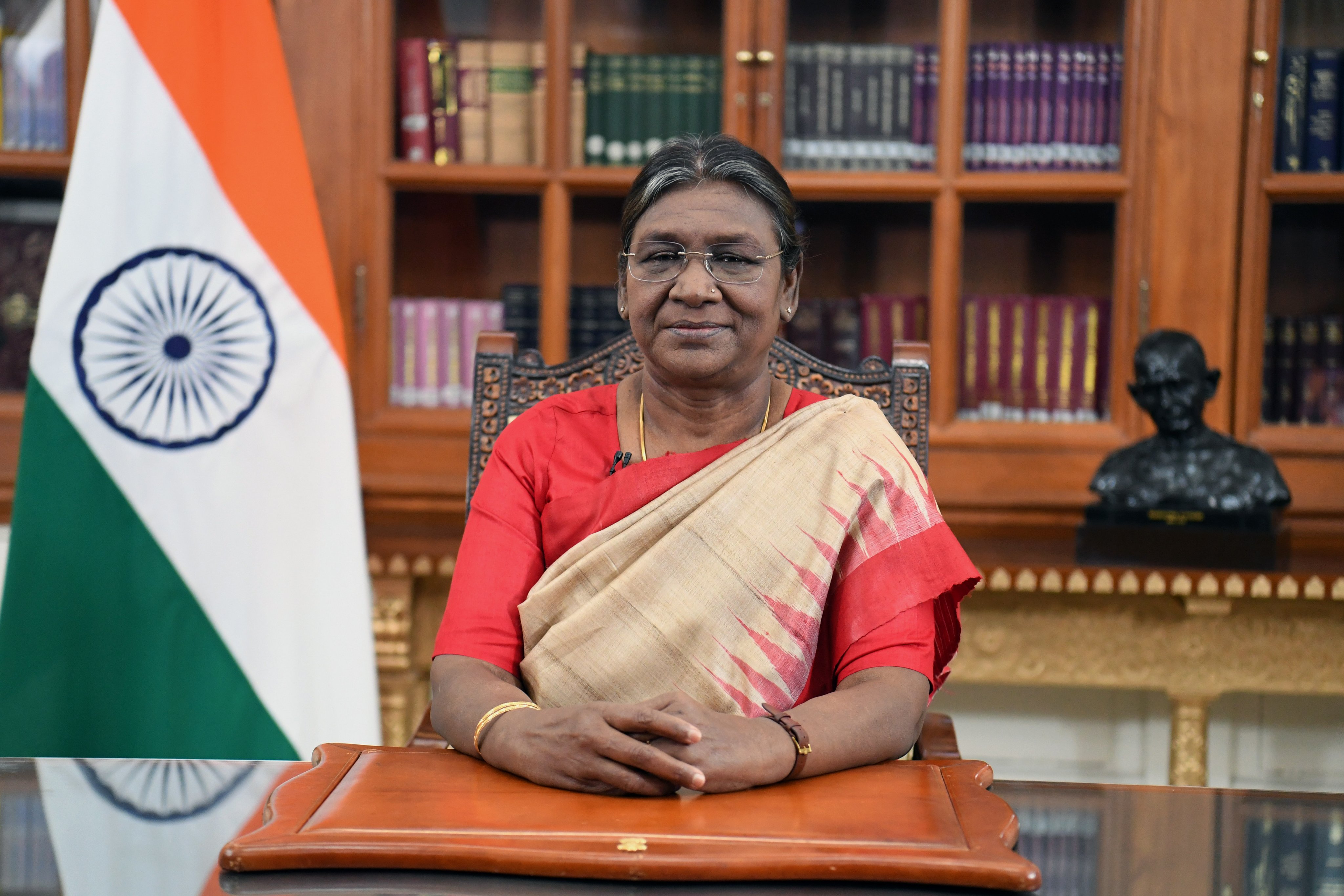The President of India the first citizen and constitutional head of state stands at the pinnacle of India’s democratic framework. Though the role is largely ceremonial, it carries profound symbolic weight and constitutionally defined responsibilities. Let’s unravel how the President is elected, how long they serve, and what powers they hold.
1. Who Is the President of India?
- The President serves as the head of state, performing roles that are ceremonial yet constitutionally significant.
- They are the nominal executive head, supreme commander of the armed forces, and the first citizen of India.
- The office was established when India became a republic on 26 January 1950, replacing the colonial-era Governor-General.
2. How Is the President Chosen?
Electoral College
- The President is indirectly elected, not by popular vote, but by an electoral college comprising:
- Elected members of the Lok Sabha and Rajya Sabha
- Elected members of State Legislative Assemblies
- Elected members of Delhi and Puducherry assemblies
Voting Mechanism
- Uses proportional representation with the Single Transferable Vote (STV).
- Votes are weighted by population to balance representation.
Supervisory Authority
- The Election Commission of India conducts the election.
3. Term Duration & Eligibility
Term: 5 years (renewable)
Minimum Age: 35 years
Eligibility:
- Must be an Indian citizen
- Qualified for election to the Lok Sabha
- Cannot hold any office of profit under the government
A President can resign, be re-elected, or be impeached for violating the Constitution.
4. Constitutional and Ceremonial Functions
Guardian of the Constitution
- Duty under Article 60: Preserve, protect, and defend the Constitution.
Role in Lawmaking
- Summons and dissolves Parliament, delivers the President's Address.
- Gives assent to bills:
- Can approve, withhold, or return a non-money bill.
- Can issue ordinances when Parliament is not in session.
Executive Authority
- Executive power vested in the President under Article 53, but exercised on Cabinet advice.
- Must enforce Supreme Court orders under Article 142.
5. Powers of Appointment
Appoints, on Cabinet’s advice:
- Prime Minister and Council of Ministers
- Governors of states
- Chief Justice and judges of Supreme Court and High Courts
- Election Commissioners, CAG, Attorney General, UPSC members, ambassadors
6. Judicial & Clemency Powers
- Can grant pardons, reprieves, commutations, remissions under Article 72.
- May refer constitutional issues to the Supreme Court for advisory opinion under Article 143.
7. Financial and Administrative Powers
- Money bills need Presidential recommendation.
- President presents the Union Budget and manages the Contingency Fund of India.
- Constitutes the Finance Commission every five years.
8. Diplomatic & Military Authority
- Represents India in foreign affairs, appoints diplomats, and signs treaties.
- As Commander-in-Chief, can declare war or peace on Cabinet advice.
9. Emergency Powers
Can proclaim:
- National Emergency (Article 352)
- President’s Rule in states (Article 356)
- Financial Emergency (Article 360)
These expand Presidential authority significantly during crises.
10. Impeachment and Succession
- Impeached by Parliament for violating the Constitution with a two-thirds majority.
- In case of vacancy, Vice-President steps in; if both are vacant, the Chief Justice assumes interim duties.
Conclusion
Despite its ceremonial nature, the Presidency of India is a vital pillar of the Constitution. It symbolizes national unity, guides the democratic process, and provides moral oversight in times of crisis. In moments of constitutional challenge, the President serves as India’s constitutional conscience.



